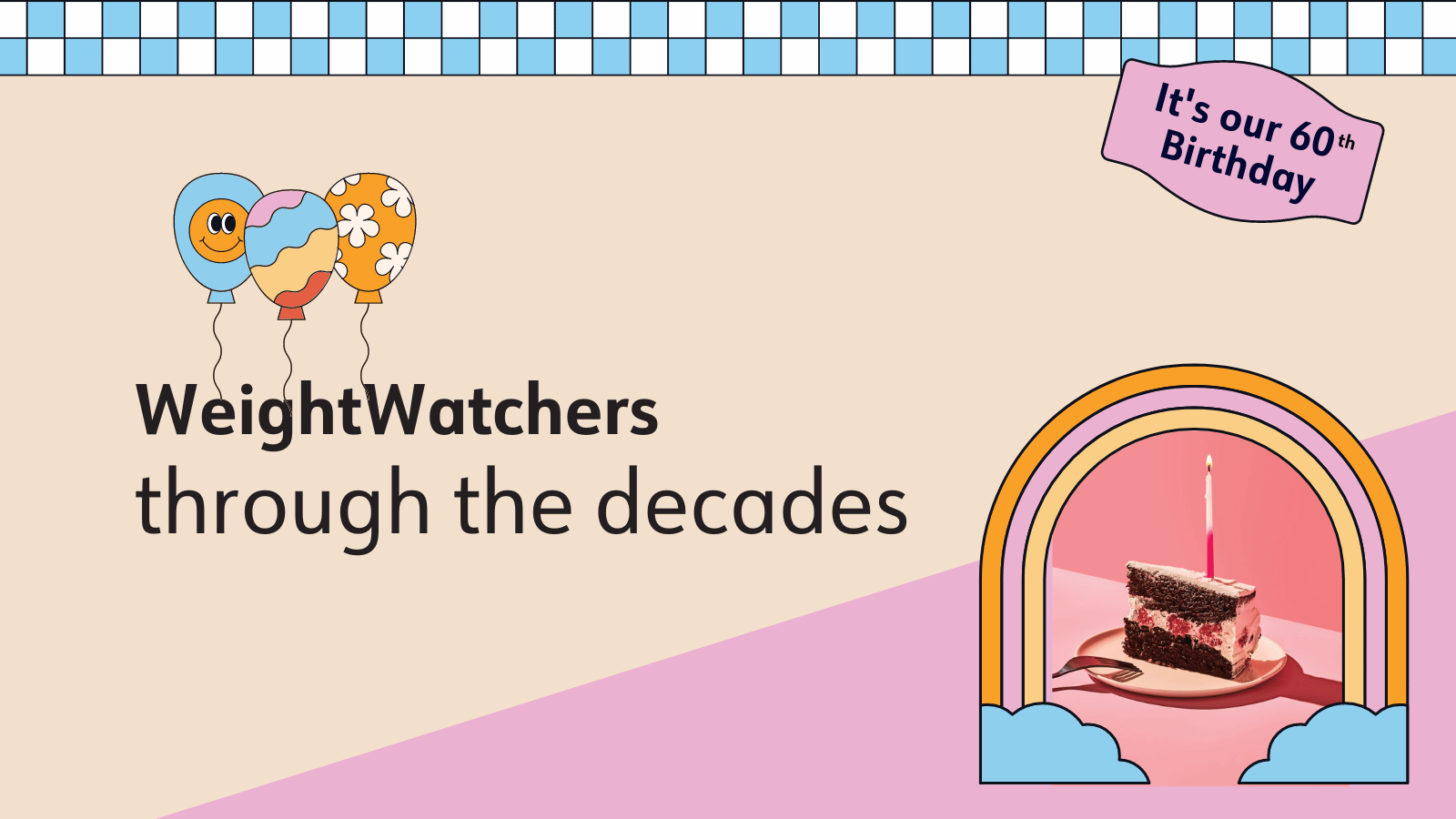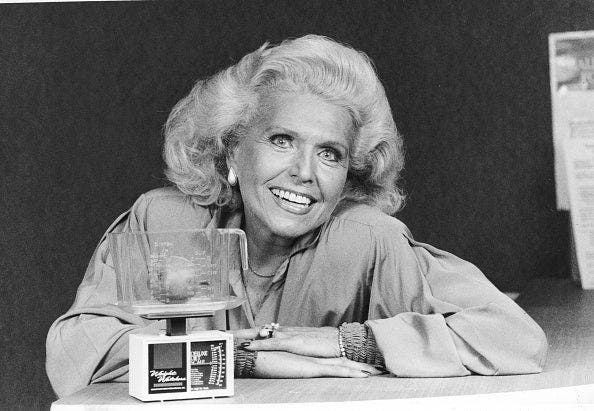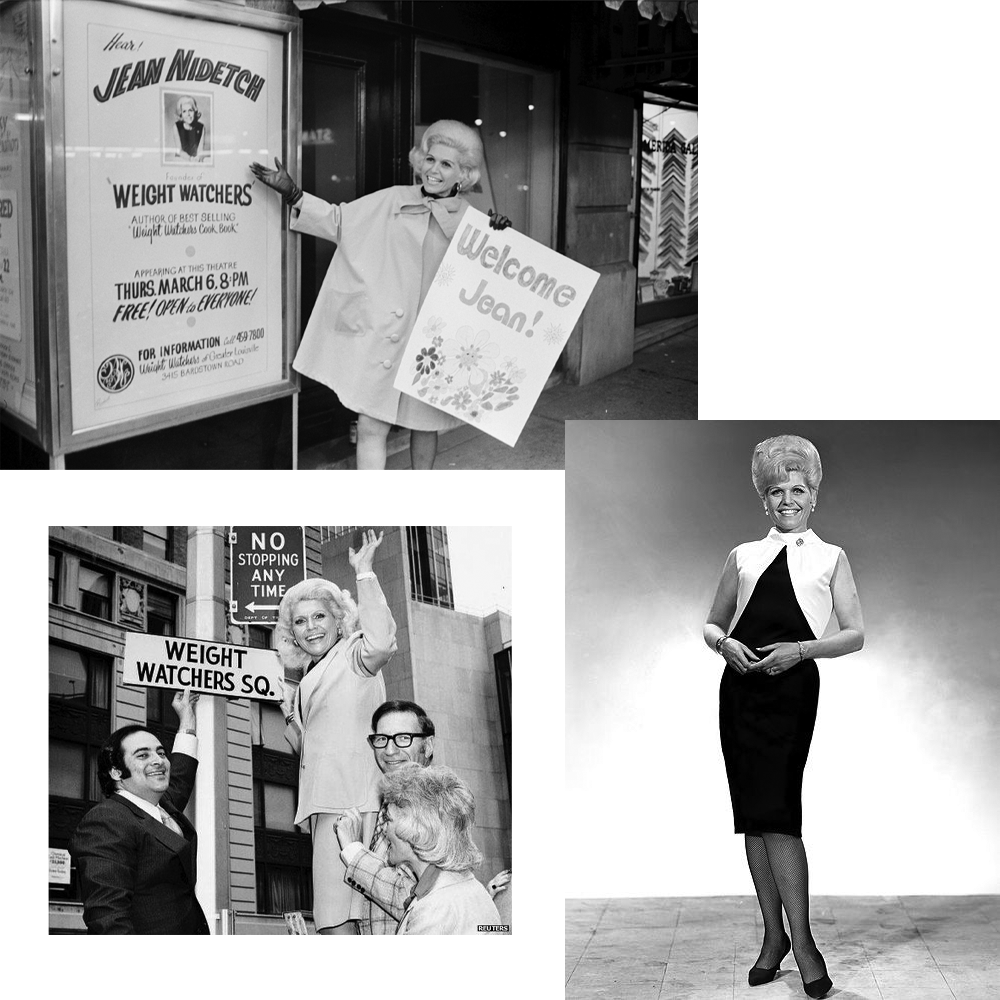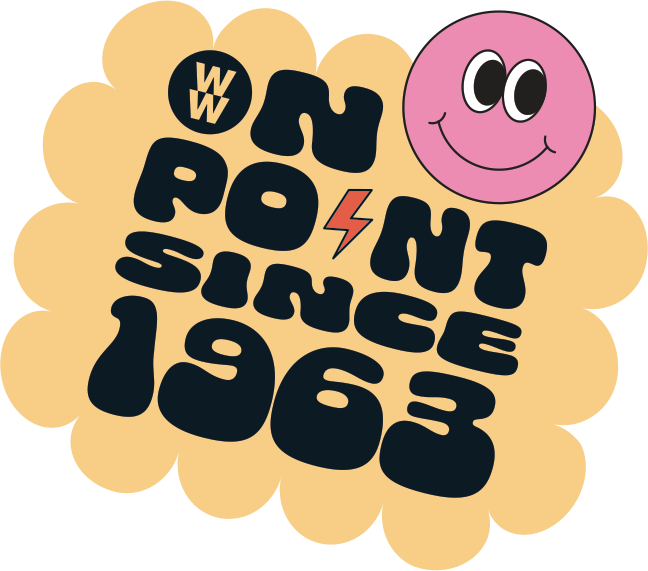The history of WeightWatchers


Few – if any – weight-loss programs have stood the test of time like WeightWatchers. The secret to its longevity? It’s continues to be popular, because it works.
But don’t just take our word for it. With more than 145 studies published about WW, a 2022 study comparing 141 weight-loss programs not only identified WW as having clear evidence to support its efficacy, it also singled WW out from the crowd as having the largest number of randomised clinical trials evaluating its effectiveness.
It makes sense then that since WW was launched in 1963, it’s continued to be one of the few commercial weight and wellness programs to consistently rank high on both consumer and expert recommendation lists.
It hasn’t got there by standing still though. Drawing on the very latest science, over six decades the program has been constantly innovating and evolving, something it continues to do – and will keep on doing.
But where did it all begin? And what are the memorable moments that have seen it grow into the award-winning program it is today? Here’s what you need to know.
From living room to legendary status
Trailblazer Jean Nidetch started a global wellness revolution from her lounge room. WW officially launched in 1963, but it actually began two years earlier when a then 37-year-old American named Jean Nidetch wanted to lose weight, but decided she’d had enough of fad diets that never worked.

Making the decision to join a free 10-week weight-loss program offered by New York city’s Board of Health, she finally found something that did work, but after she’d lost about 9kg, her motivation to keep going slid. She knew the ingredient that was missing – support.
So, in 1962, she started her own weight-loss support group, inviting friends into her living room once a week to talk about their weight-loss goals, tips and challenges. Within months, more than 40 people were attending Jean’s at-home ‘meetings’ – and she realised two things. Firstly, demand was high. And secondly, losing weight successfully was about so much more than sticking to a eating plan.
A year later, Jean officially launched WeightWatchers Inc, holding its first official meeting for members in a rented loft above one of New York’s movie theatres. Four hundred people attended that meeting.
In April, 1969 WeightWatchers opened its doors in Australia, holding the first Meeting in Sydney, which would eventually grow to include hundreds of locations in every state and territory. New Zealand soon joined the rest of the world with its own WeightWatchers success stories, launching the first Meeting in Auckland in 1972. Today, WW has 3.5 million members around the globe.
Decades of innovation
While the emphasis on WW’s key elements, including ‘community’, ‘science’, and ‘food’, has remained consistent since the 1960s, each of those elements has gone through more than a few changes over the decades. Let’s take a look at how far things have come.
The community
Back then… as you’ve just read, in the 1960s WW’s community rapidly grew from one that met in Jean’s living room to one that met up for weekly meetings in various locations all over the world.
These days… physical meetings, called workshops, are still a cornerstone of the WW program, but there are many (so many!) other ways for WW members to seek and get support, too. These range from virtual workshops to 24/7 Live Coaching and Connect, WW’s member-only social network, which can all be accessed via the WW app.
In a nutshell, when you’re a WW member, community support is always available no matter the time of day or night. And that matters, with research confirming that receiving ongoing support is necessary for weight-loss success, whether it’s delivered face-to-face or online.
The science

Back then… the nuts and bolts of the first WW program were firmly based around the medically backed, health-board eating plan Jean was introduced to in 1961. But even in its earliest days, Jean and her team changed the program regularly to keep pace with advances in nutrition knowledge and science.
That approach continued over the decades, which explains why the program has had many updates, transforming from ‘Quick Success’ in 1988 to ‘1,2,3 Success Points Plan’ in ’98 and ‘Winning Points’ just two years later. Since then programs have included ‘Time for Success’, ‘ProPoints’, ‘Your Way’,‘WW Freestyle’ and ‘PersonalPoints’.
These days… our current weight-loss program is not only designed using the very latest advances in nutrition and behavioural science, based on what that science shows, the WW program is now easier than ever to follow. As our most simplified weight-loss program ever, simply stick to your Points Budget and you’ll have success.
The food
Back then… WW's first meal plans were nutritionally balanced and devised mainly around keeping sugar and fat content low. In 1966 the very first WeightWatchers Cookbook was published. Featuring menu plans and more than 500 recipes, it sold more than 1.5 million copies and became a bestseller. Just two years later, WW’s first product range went on sale, featuring heat-and-eat meals.
But one of the biggest ‘food’ changes came in the late 1990s, with WW introducing its first ‘Points system’ in 1998. Over the years, Points went through numerous makeovers, becoming increasingly sophisticated and personalised with each evolution. Another big shift came in 2010 when fruits and non-starchy vegetables became the first ZeroPoint foods and processed foods were assigned higher Points values.
These days… as well as no food being off limits on WW, the program’s ZeroPoint foods list features 200+ foods, none of which you have to weigh, measure or track, no matter how often you reach for them. The ZeroPoint list, as well as the Points values for other foods and recipes, are also exactly the same for every WW member,* making it so much easier to share recipes and feel inspired about what to eat.
And speaking of inspiration, there are an unlimited number of WW recipes to explore via the WW app, the website or our cookbooks.
The technology
Back then… Jean realised pretty early on that tracking what you eat is one key to weight-loss success (and she was right!) but in the ‘60s – and for quite some time to come – it was all done via pen and paper. It wouldn’t be until 2009 that a digital revolution happened, when WW released its first e-tools and app.
These days… the WW app is our easiest to use yet, making it easier than ever to track everything from activity to recipes and meals. Plus, as well as housing all the resources you need to follow the program, it also includes some pretty amazing features, like a barcode scanner and the ‘What’s in Your Fridge?’ recipe suggester. There’s also a suite of behaviour-change techniques and motivational components, like rewards and challenges.
As WW enjoys turning 60, there’s no question it has come a long way since the 1960s, with the program becoming a better and better version of itself over time. We can’t wait to see what’s next. Here’s to another 60 years!
*Members on the diabetes program have a different ZeroPoint Foods list, which may affect the Points values of certain foods and recipes.
